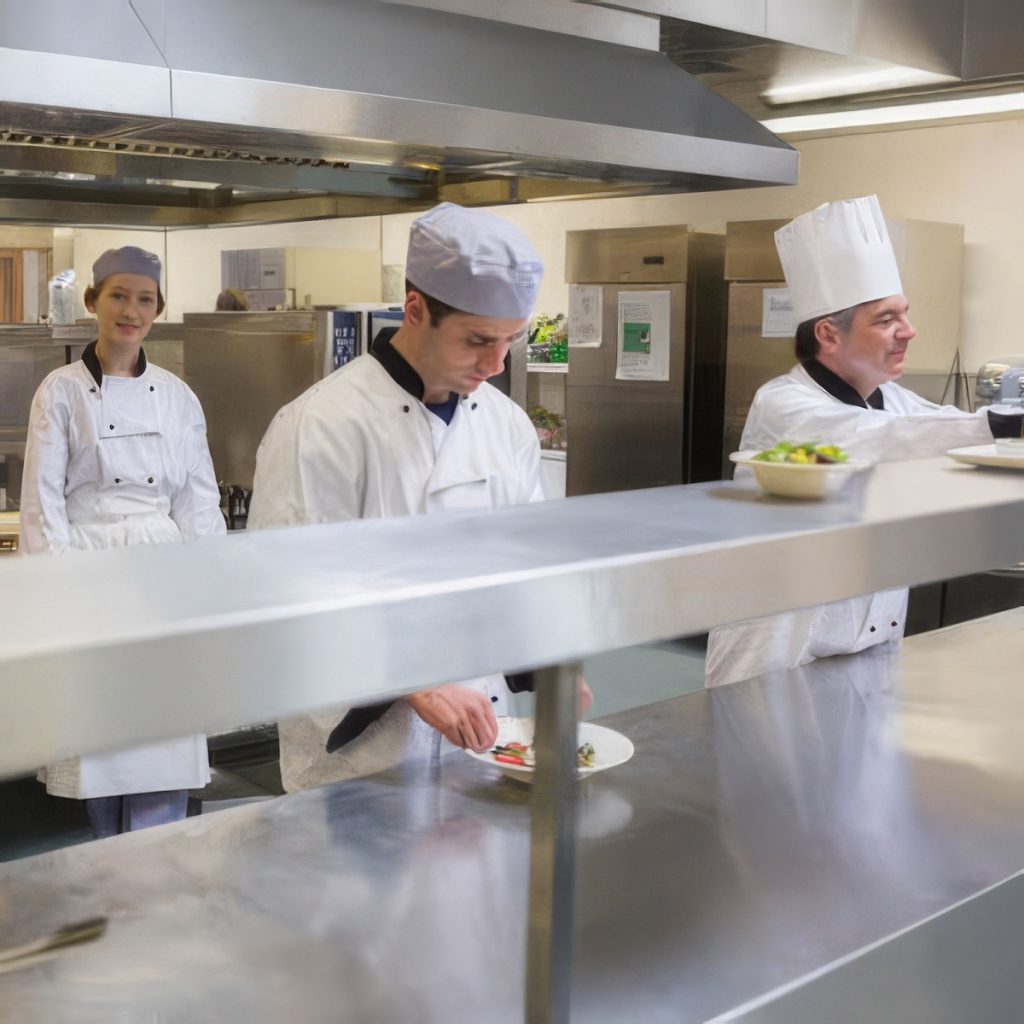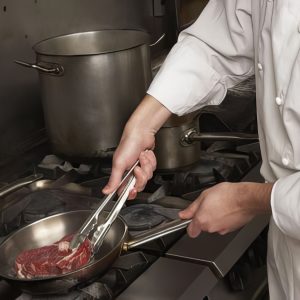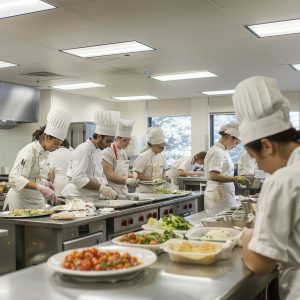What Is A Culinary School Production Kitchen
A culinary school production kitchen is a facility within a culinary school where students gain hands-on experience in food preparation and production. These kitchens are designed to simulate professional kitchen environments found in restaurants, hotels, catering companies, and other food service establishments.
In a culinary school production kitchen, students learn various culinary techniques, such as knife skills, cooking methods, food safety, and sanitation practices. They work with a wide range of ingredients and equipment under the guidance of experienced instructors.
The primary goal of a culinary school production kitchen is to provide students with practical training that prepares them for careers in the culinary industry. This often involves working in teams to plan and execute menus, manage kitchen operations, and develop their creativity and problem-solving skills.
Why Have Production Kitchens
The concept behind production kitchens is that students in baking or cooking school create food that goes to the school’s restaurants or even to student meals. This way, the food gets real-world taste tests, and students also learn about mass production and meeting demand.
- Hands-on Experience: Students gain practical, hands-on experience in a professional kitchen environment, allowing them to develop essential culinary skills and techniques.
- Real-world Simulation: Production kitchens simulate real-world kitchen settings found in restaurants and other food service establishments, providing students with a realistic learning experience.
- Exposure to Professional Equipment: Students have access to a wide range of professional-grade kitchen equipment, allowing them to familiarize themselves with industry-standard tools and machinery.
- Ingredient Variety: Production kitchens typically stock diverse ingredients, allowing students to work with different types of foods and flavors, broadening their culinary knowledge and palate.
- Teamwork and Collaboration: Working in a production kitchen encourages teamwork and collaboration among students as they plan and execute menus, manage kitchen operations, and support each other in various culinary tasks.
- Time Management Skills: Students learn to manage their time effectively to meet production deadlines and deliver high-quality dishes within specified timeframes, a crucial skill in the fast-paced culinary industry.
- Creativity and Innovation: Production kitchens provide a creative space where students can experiment with new ingredients, recipes, and cooking techniques, fostering innovation and creativity in their culinary endeavors.
- Feedback and Guidance: Instructors in production kitchens offer valuable feedback and guidance to students, helping them refine their culinary skills, troubleshoot challenges, and improve their overall performance in the kitchen.
- Industry Connections: Culinary schools often partner with restaurants, hotels, and other food service establishments, providing students with opportunities for internships, externships, and networking within the industry.
- Preparation for Employment: By working in a production kitchen, students graduate with the practical skills and knowledge needed to pursue careers in the culinary industry, whether as chefs, cooks, pastry chefs, food stylists, or culinary entrepreneurs.
Similarity to a Restaurant Kitchen
A culinary school production kitchen is similar to a restaurant kitchen in many ways. Both environments involve food preparation, cooking, and service, and they share several key characteristics:
- Professional Equipment: Both restaurant kitchens and production kitchens are equipped with professional-grade kitchen equipment, such as stoves, ovens, grills, fryers, and various specialized tools, to facilitate food preparation and cooking.
- Menu Planning and Execution: There is a focus on planning and executing menus in both settings. Chefs and cooks work together to prepare dishes according to established recipes, ensuring consistency and quality in the final products.
- Teamwork and Collaboration: Restaurant and production kitchens require teamwork and collaboration among kitchen staff. Chefs, cooks, and other kitchen personnel work together to coordinate food preparation, timing, and service, often in fast-paced and high-pressure environments.
- Food Safety and Sanitation: Both environments adhere to strict food safety and sanitation standards to ensure the safety and well-being of customers and staff. This includes proper handling, storage, and preparation of food, as well as maintaining cleanliness and hygiene throughout the kitchen.
- Customer Service Orientation: While the primary focus of a culinary school production kitchen may be on training and education, there is still an emphasis on customer service and satisfaction. Students learn how to prioritize customer needs and preferences, as they would in a restaurant setting.
- Creativity and Innovation: Like restaurant kitchens, production kitchens provide opportunities for creativity and innovation in menu development and dish presentation. Chefs and students may experiment with new ingredients, flavors, and cooking techniques to create unique and appealing dishes.
While there are similarities between the two, there are also differences. For example, culinary school production kitchens may emphasize learning and skill development, whereas restaurant kitchens prioritize efficiency, consistency, and profitability. Additionally, the production scale and customer interaction level may vary between the two environments.











